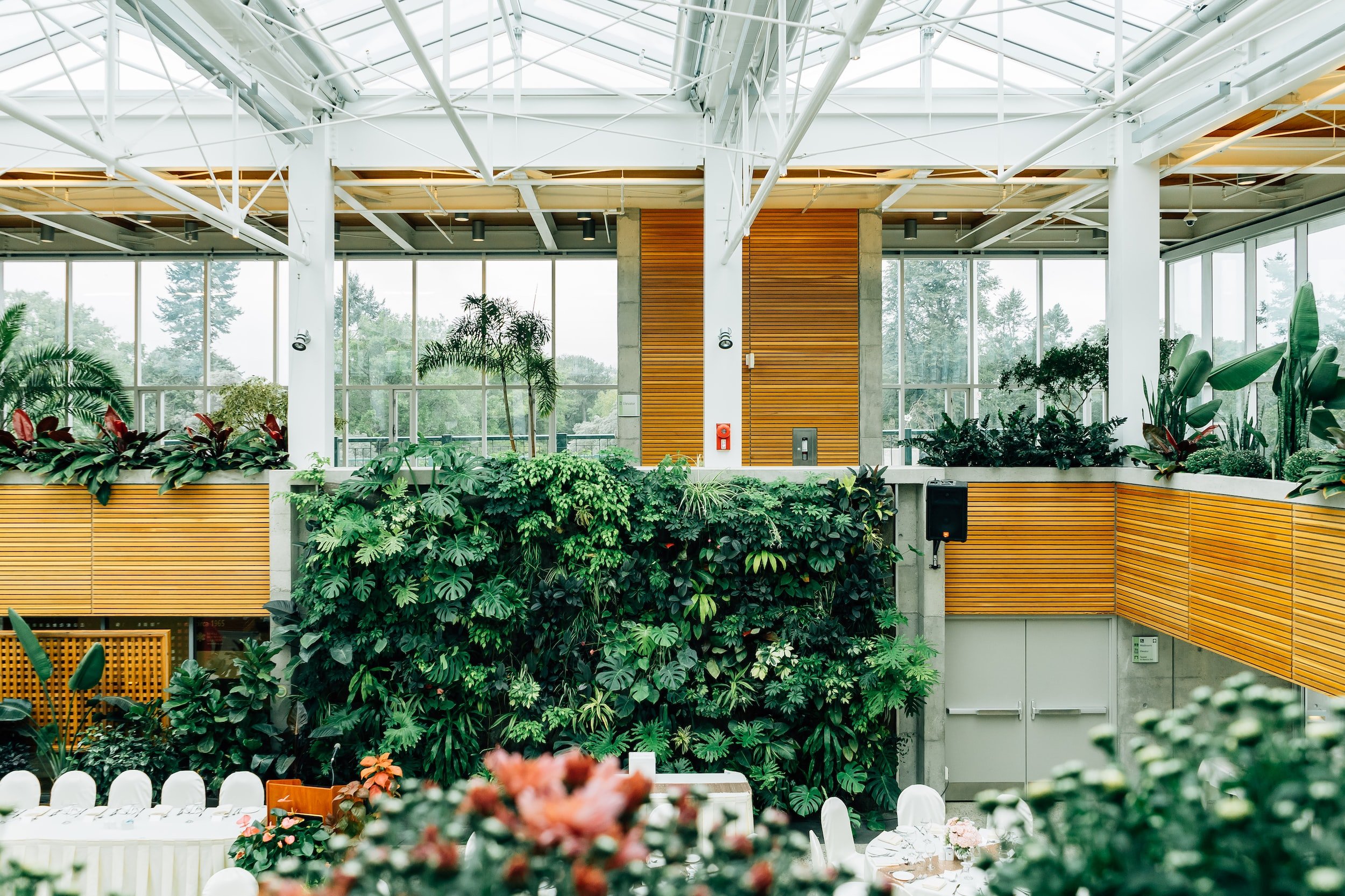Your Top 5 Questions About Green Walls, Answered
Have you noticed more green walls around lately? That’s because there probably are - green walls have continued to increase in popularity. Green walls were a $1.7b market in 2020, and are expected to reach $3b by 2030. The growing interest in sustainability, and the concurrent interest in living with nature, has made green walls more of a priority for designers, businesses and individuals. An ever-expanding selection of systems has made them increasingly accessible.
We owe much of this growth to the emergence of biophilic design, which aims to provide for our innate need to stay connected to the natural world. Biophilic design brings parts of the natural world into buildings. It allows for more natural light to illuminate indoor spaces, offers nature, plants, and animals views from our windows, and incorporates natural patterns, textures, and materials into a building's overall structure. In doing so, biophilic architecture allows those who spend their time in buildings to increase their connection to the natural world. According to the EPA, we spend nearly 90% of our time indoors, so it’s understandable that we collectively feel a desire to reconnect with nature.
As green wall experts, we’re here to help answer some of the most commonly asked questions about green walls.
What Are Green Walls?
Green Walls are a system of plants growing from a vertical plane. The idea of vertical gardens is ancient, as evidenced by the Biblical tale of the Hanging Gardens of Babylon. The concept of modern green walls arose from the work of Stanley Hart White in the 1930’s and Patrick Blanc in the 1970’s. Green walls embody the biophilic design movement, which seeks to satisfy humanity’s innate desire to connect with nature through spatial design.
Green Walls are comprised of a vertical structure that houses and supports growing plants. These plants may be in pots, trays or a growing matrix. Larger walls are usually watered by drip irrigation, but smaller green walls may be hand watered. Green walls are distinct from green facades in that the latter are comprised of plants rooted in the ground and trained to grow upwards, usually on a trellis or cable system.
Green walls are also referred to as plant walls, living walls or vertical gardens. Green wall sub-types may be referred to by their composition, such as succulent walls or herb walls. Living moss walls are sometimes considered a type of green walls as they do grow vertically, although they lack the supporting structural framework of green walls.
How Do Green Walls Work?
Green walls are designed to nurture plants with all of the elements they need to thrive: water, light, air and nutrients. Generally these walls use a vertical container or planting matrix system in which to anchor individual plants. A simple living wall may be a group of containers mounted to a grid or directly on a wall - requiring manual watering. A living wall system is a structure that is mounted to an interior or exterior wall, usually with a protective barrier between the system and the supporting wall. These types of living wall systems are generally self-watering via an irrigation system.
What Are the Benefits of Green Walls?
The benefits of green walls arise from the plants themselves, and from creating vertical space to house plants in volume. Plants have the ability to help purify air and filter VOC’s, particularly through their root systems. So green walls help to bring more plants into interior spaces, while some systems provide more root aeration than standard planting. Exterior plant walls can help to alleviate heat islands that arise in urban areas, by covering concrete or other building materials that would otherwise absorb and radiate heat.
Interaction with nature in our spaces has been shown to have many benefits to our wellness, particularly in our workplaces and homes. Being around plants aids productivity and creativity, while reducing stress. Plants can contribute to our overall feelings of well-being. Plus, we get to experience the edifying effect of their natural beauty. Plants and their soil and root systems are naturally sound absorbing, and so green walls are excellent sound buffers.
What Are the Disadvantages of Green Walls?
On the downside, no green wall is entirely maintenance-free. Nor are they recommended for situating in every space. At a minimum, green walls require access to light, water and nutrients. But to keep a green wall looking beautiful usually requires specialist care to keep plants thriving, as well as periodic replacement of plants. Professional installation and maintenance is recommended to ensure they are getting the correct amount of water and nutrients. Maintenance includes removal of distressed leaves or plants, monitoring soil conditions, feeding and pest control.
How Do Green Walls Help the Environment?
Green walls help the environment by bringing us closer to nature, in spaces that may otherwise be without plants or greenery. Studies have shown that people care more about the environment when they feel closer to nature. In urban environments, green walls provide sound absorption and help to deter the heat island effect. Green walls also use water responsibly. They are more water-efficient through the use of drip irrigation and water recycling.



